Issue Archive
Table of Contents
BLOOD COMMENTARIES
BLOOD SPOTLIGHT
Menin inhibitors in the treatment of acute myeloid leukemia
In this Blood Spotlight, Huls et al highlight why small molecule inhibitors of menin are creating excitement in the acute myeloid leukemia (AML) field with the first-in-class therapy recently receiving US Food and Drug Administration approval. The authors succinctly review the biology of menin, an oncogenic cofactor in several genetic subtypes of AML, which functions as a scaffold protein interacting with various partners in complexes that control gene expression. Early clinical trial data for several menin inhibitors more advanced in clinical development are summarized to illustrate their potential in combination therapy and the direction of ongoing research.
HOW I TREAT
How I treat blastic plasmacytoid dendritic cell neoplasm
Blastic plasmacytoid dendritic cell neoplasm is a rare but aggressive malignancy that arises from precursors of plasmacytoid dendritic cells and typically involves skin, lymph nodes, and bone marrow. Kharfan-Dabaja and colleagues use 4 case studies to outline their approach to diagnosis and initial management, including prophylactic intrathecal chemotherapy and allogeneic transplantation for patients with this disease.
CLINICAL TRIALS AND OBSERVATIONS
Asciminib plus dasatinib and prednisone for Philadelphia chromosome–positive acute leukemia
Clinical Trials & Observations
Incorporation of ABL1-directed tyrosine kinase inhibitors (TKIs) into regimens has markedly improved outcomes in Philadelphia chromosome–positive (Ph+) acute lymphoblastic leukemia (Ph+ ALL). In the first phase 1 trial combining an allosteric BCR::ABL1 inhibitor asciminib with the TKI dasatinib and steroids in adult patients with Ph+ acute leukemias, Luskin and colleagues found that this induction strategy is feasible and well tolerated at the recommended phase 2 dose of asciminib at 80 mg/day. The authors document a 100% complete remission rate in patients with newly diagnosed Ph+ ALL, prompting further evaluation in studies also incorporating blinatumomab.
CNS relapse in high-grade B-cell lymphoma with MYC and BCL2 rearrangements and dark-zone signature–expressing DLBCL
Clinical Trials & Observations
Brief Report
B-cell lymphoma relapses involving the central nervous system (CNS) are uncommon but are often refractory to treatment, resulting in short overall survival. Alduaij and colleagues refine our understanding of which genetic subtypes of aggressive B-cell lymphomas have increased risk, identifying a CNS relapse incidence of 6-7% in both high-grade B-cell lymphoma with MYC and BCL2 rearrangements and “dark zone” signature–expressing germinal center diffuse large B-cell lymphomas.
The dark zone of CNS relapse in DLBCL
Clinical Trials & Observations
LYMPHOID NEOPLASIA
The GATA-3–dependent transcriptome and tumor microenvironment are regulated by eIF4E and XPO1 in T-cell lymphomas
A poor prognosis subset of T-cell lymphomas highly expresses the lymphoid-lineage, zinc-finger transcription factor GATA-binding protein 3 (GATA-3), which in this context is oncogenic. Kady et al found dysregulated nuclear export of GATA-3 via the exportin-1 (XPO1) eukaryotic translation initiation factor 4E (eIF4E) pathway. The authors also found high levels of expression of XPO1 in tumor-promoting lymphoma-associated macrophages (LAMs) and provide preclinical in vivo evidence that inhibition of XPO1 with selinexor depletes both T-cell lymphomas and LAMs. These data suggest that selinexor be formally clinically evaluated in poor-prognosis T-cell lymphomas.
MYELOID NEOPLASIA
Preclinical efficacy of CDK7 inhibitor–based combinations against myeloproliferative neoplasms transformed to AML
RED CELLS, IRON, AND ERYTHROPOIESIS
The hepcidin-ferroportin axis modulates liver endothelial cell BMP expression to influence iron homeostasis in mice
Liver endothelial cells (LECs) play a central role in the regulation of iron homeostasis. Fisher et al demonstrate that in iron deficiency the intracellular iron exporter ferroportin is highly expressed in LECs and that this regulates both LEC intracellular iron levels and production of bone morphogenic proteins, which in turn activates hepcidin transcription in adjacent liver cells. In a paracrine loop, hepcidin regulates ferroportin levels in LECs. These data suggest a model of bidirectional crosstalk that enables fine tuning of systemic iron balance.
THROMBOSIS AND HEMOSTASIS
Prothrombotic antibodies targeting the spike protein's receptor-binding domain in severe COVID-19
To better understand the pathophysiology of the observational links between COVID-19, thrombosis, and antiplatelet antibodies, Zhu et al studied 130 hospitalized patients with COVID-19 and found evidence of clonal production of viral receptor-binding domain (RBD)–specific, platelet-activating antibodies that resemble the pathogenic antibodies found in heparin-induced thrombocytopenia but are independent of prior heparin exposure. The authors’ data indicate that a subset of the antibodies to the RBD of the spike protein contributes to the pool of prothrombotic antibodies arising in many patients with severe COVID-19 infection.
LETTER TO BLOOD
β-Thalassemia minor is associated with high rates of worsening anemia in pregnancy
Clinical Trials & Observations
β-Thalassemia minor may cause mild microcytic anemia that can be misdiagnosed as iron deficiency. Langer and colleagues undertook a retrospective study of hemoglobin levels and clinical course in 347 pregnancies in 242 patients with β-thalassemia minor, finding anemia <9 g/dL in 31% of pregnancies in the third trimester. This is mostly self-limiting, with exaggerated dilutional anemia of pregnancy and not iron deficiency appearing to be the cause. The authors caution that iron infusions are only appropriate in a small minority of patients.
BLOOD WORK
-
Cover Image
Cover Image
![issue cover]()
An illumination microscopy fluorescence image shows ribosomes from T-cell lymphoma. The content of intranucleolar ribosomes is shown as green aggregates, and the nuclei is shown in blue. See the article by Kady et al on page 597.
- PDF Icon Front MatterFront Matter
- PDF Icon Table of ContentsTable of Contents
- PDF Icon Editorial BoardEditorial Board
Advertisement intended for health care professionals
Email alerts
Advertisement intended for health care professionals


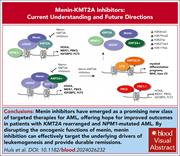
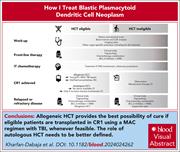
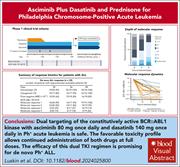
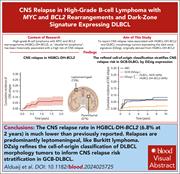
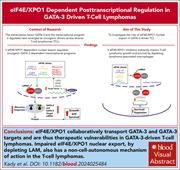
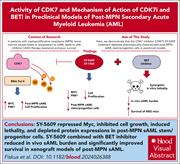
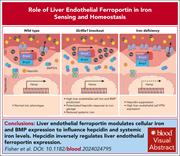

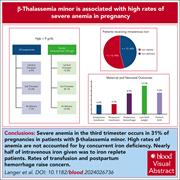

Asciminib for Ph+ ALL: a step forward?
Clinical Trials & Observations